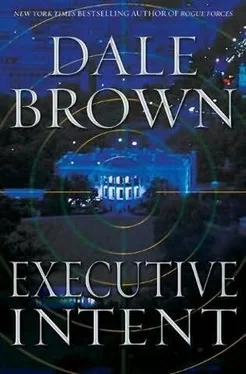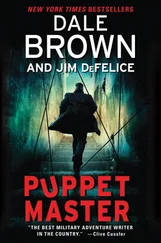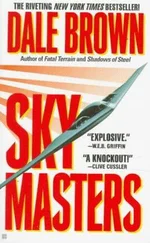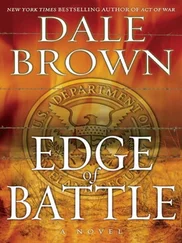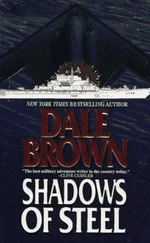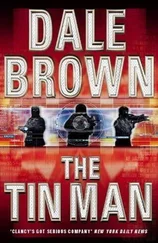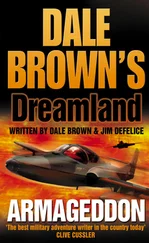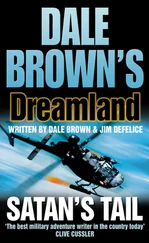“Still not showing latched, Stud One.”
“Disregard it,” Boomer said. “It’s probably just a bad contact. We’re going to open it again in a couple hours when we reach Kingfisher-Eight anyway.”
“Bag it, Boomer,” Kai said. “Let’s get it looked at while we off-load the cargo.”
“General, I’ll check it when I rendezvous with Kingfisher-Eight and Jeff is doing his EVA. We’ll be cool. It’s probably something simple. Request detaching the fuel lines and permission to push.”
“Boomer, if you have to do an emergency reentry, and the canopy’s not locked, you’ll both be crispy critters.”
“Then we just won’t do an emergency reentry, General-at least, not with us inside,” Boomer said. “We’ll wait outside for you to pick us up.”
“It’s not funny, Noble.” There was a brief pause; then, “Retract fuel lines, permission to push granted,” he said finally. Boomer released the locks connecting the spaceplane to the docking beam and touched the thrusters, pushing the Black Stallion away from the station.
Following the computer’s guidance, Boomer steered the spaceplane to the new orbital inclination, then activated the Laser Pulse Detonation Rocket System engines to accelerate into the transfer orbit. The Hohmann transfer orbit was a new elliptical orbit that touched both of the circular orbits of Armstrong Space Station and the Kingfisher-8 weapon garage. In order to minimize fuel burn and save time, the timing had to be perfect so the garage would be nearby when the second burn was over-that was the reason why the spaceplane had to either be on its way on time or wait almost another day for the right moment.
The first burn lasted two minutes and pushed the spaceplane into a higher three-hundred-mile orbit. Forty-five minutes later, Boomer turned the spaceplane again to the proper heading and fired the engines again to enter Kingfisher-8’s orbit. “Transfer complete, and Kingfisher-Eight is in sight,” Boomer reported. As planned, the weapon garage was dead ahead and less than three miles away. He patted the top of his instrument panel. “Good show, Stud. How are you doing back there, Jeff?”
“In the green, Boomer,” McCallum replied.
It took just a few minutes to close the distance with Kingfisher-8, and soon they were orbiting within a few yards. The Kingfisher garages were cylindrical devices about the size of a Chevrolet Suburban. They had radar, electro-optical, and infrared sensor domes that allowed them to look in all directions; datalink antennas that connected them to Armstrong Space Station, to ground stations, and to other satellites and weapon garages; solar panels for power; and thrusters to point it in any direction. The business end revealed the six Trinity interceptors and Mjollnir attack reentry devices snug in their launch tubes, pointing Earthward.
“Station check, Jeff.”
“Roger.” A few moments later: “Station check complete, Boomer, clear to open the canopy.”
“Coming open.” Boomer motored both canopies open. “Here we are, Jeff,” he said. “I’m unstrapping to help the Maytag repairman out.” He unbuckled himself, made sure his tether and umbilicals were secure, then floated free of the Black Stallion spaceplane. Using handholds, he maneuvered himself to the aft cockpit, unstrapped McCallum, double-checked his tether and umbilicals, helped him out of the spaceplane, then retrieved his soft-pack and clipped it onto his space suit. “Have fun out there, honey,” he said. “I’ll be waiting.”
“Kiss kiss,” McCallum said. He grasped his Handheld Maneuverability Unit maneuvering gun, aimed it properly, and hit the trigger. Small spurts of nitrogen gas easily propelled him across to the Kingfisher-8 weapon garage. “Armstrong, verify Eight’s radars are standby, nose is cold.”
“Kingfisher-Eight’s radar is in standby, nose is cold, power is off; however, be advised, continuity is not being monitored,” Seeker radioed from Armstrong. “Clear to approach, advise extreme caution, sir.”
“Roger that. Moving in.”
Boomer checked that McCallum’s umbilicals were free and clear, then returned to his seat in the Black Stallion-his suit didn’t provide the same radiation or micrometeorite protection as McCallum’s did, so it was safer for him to use the spacecraft for protection as much as possible. Once inside, he motored the aft cockpit canopy up and down a few times, and each time it registered closed and locked. “Looks like the canopy fault has cleared,” he reported.
“We’ll check it over carefully before we do the next reentry,” Raydon said.
About fifteen minutes later, McCallum radioed, “I’ve found the bad circuit boards. Should be another twenty minutes and I’ll be done.”
“Holler if you need any help, Jeff,” Boomer said.
“Wouldn’t you feel kinda naked, coming out here in just your leotards?”
“Nah. Besides, I’m sure the family jewels are pretty much cooked already. Luckily when I started flying in space, I decided to freeze a bunch of the swimmers for safekeeping, just in case the ol’ magazine starts spitting out nothing but blanks.”
“Really? You did that?”
“Haven’t you?”
“Don’t listen to him, Jeff-that’s an urban myth,” Seeker said. “Boomer might be firing blanks for other reasons.”
Ten minutes before impact, the payload section of the DF-21 rocket opened and ejected a single kill vehicle, a rectangular device no larger than a refrigerator, covered in thruster nozzles aimed in all directions. The nose section had a radar guidance sensor, slaved to the position of the Kingfisher-8 satellite ahead. As the Kingfisher weapon garage rose above Earth’s horizon, the kill vehicle’s radar locked onto it and began making its own intercept corrections.
“Okay, Armstrong, I’ve replaced boards T-7 and RF-15 in the continuity control module,” McCallum reported several minutes later. “I’m pretty sure that should do it. If it doesn’t, I’ll need to replace the entire module. We’ll need to bring one up. I’m heading back to the Stud.” During his space walk, Kingfisher-8 and the S-9 had drifted closer to each other-the two spacecraft were in their own orbits and would eventually proceed on their own paths unless corrected-so it didn’t take as long as before for McCallum to fly himself back.
Boomer exited the spaceplane, made sure the tethers and umbilicals were properly stowed, connected McCallum back to the Stud, stowed the soft-pack, got him back into his seat, and strapped him in. “How many space walks does that make for you, Jeff?” he asked.
“Three on this deployment and eleven overall,” he replied. “You?”
“I stopped keeping count a long time ago, bud,” Boomer said. “It’s gotta be several dozen.”
“Unbelievable! I never would have thought that spacewalking and going into orbit would be so commonplace.”
“A lot of otherwise smart folks still don’t believe it.”
“To tell the truth, spacewalking made me nervous as hell at first,” McCallum admitted. “I can’t shake the feeling of falling.”
“I got the same way at first-like standing on a tall bridge looking down,” Boomer said. “You get over it. Now I just enjoy the view.” Boomer climbed back into the Black Stallion, reconnected his air and communications lines, and strapped in. He maneuvered the spaceplane about a hundred yards away from Kingfisher-8. “We’re clear, Armstrong,” he radioed. “Clear to power it back up.”
“I want you farther away, Boomer,” Kai radioed. “The continuity circuits control weapon arming and safing. If it’s still malfunctioning, you could get a Trinity in the face. Prepare to head to the transfer orbit.”
“Interface with the transfer orbit won’t be for another three hours, General,” Seeker said.
Читать дальше
